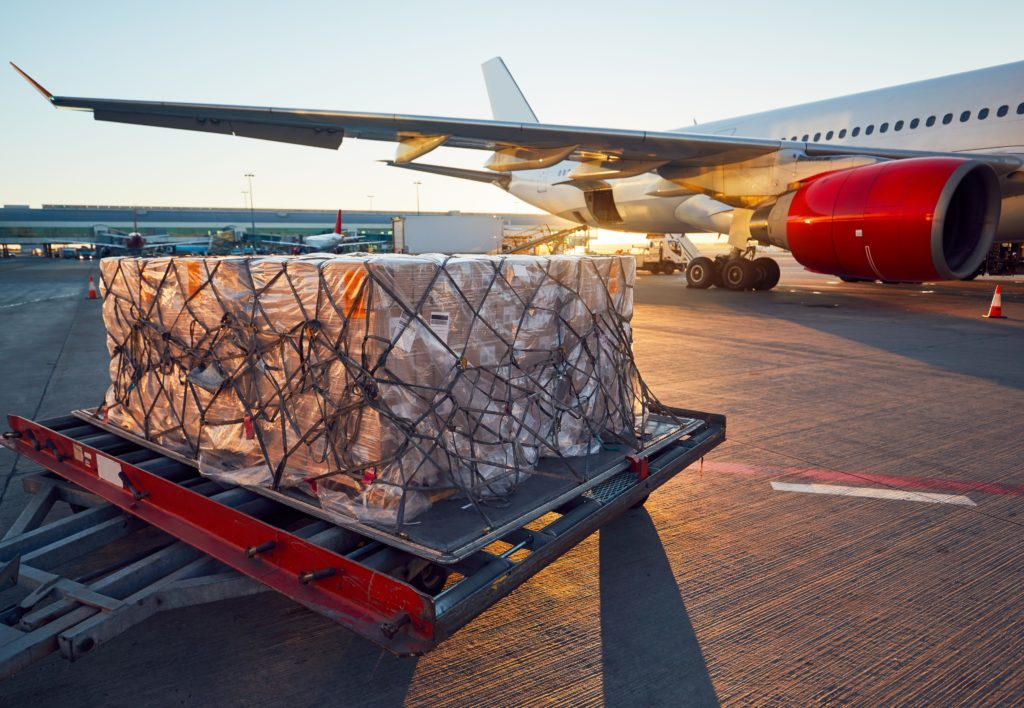NAFTA Country of Origin and Section 301 Tariff
NAFTA Country of Origin and Section 301 Tariff
How to Determine Country of Origin under NAFTA and Section 301
Determining whether goods imported from NAFTA countries are also subject to the Section 301 tariffs can be a complex process, especially if the goods are composed of materials or components that originate from countries other than the NAFTA member countries.
One way to determine whether a product is subject to Section 301 tariffs is to consult the Harmonized Tariff Schedule (HTS) of the United States. The HTS is a standardized system used to classify goods for customs purposes, and it lists the applicable tariff rates and special trade programs that may apply to a particular product.
If a product is listed under the HTS code that is subject to Section 301 tariffs, then it is likely that the product is also subject to the additional duties. It is important to note that the HTS codes can change frequently, and businesses should stay informed about any updates or changes that may affect their products.
Additionally, businesses can seek the assistance of a customs broker or a trade expert to help navigate the complex rules and regulations governing international trade. They can provide guidance on the best practices for determining the country of origin and for ensuring compliance with all relevant trade regulations, including Section 301 tariffs.
Preferential Tariff Treatment under NAFTA and Applicability of Section 301 Trade Remedy – Case 1
The product under consideration is described as a brushed electric motor which is intended to be used with electric door locks. The product consisted of three components: the stator or rear housing, the rotor or armature assembly, and the end cap assembly.
All three components are classified under heading 8503, HTSUS, which provides for “[p]arts suitable for use solely or principally with the machines of heading 8501 or 8502.”
The components of Chinese origin are imported into Mexico, and assembled into a finished product.
What is the country of origin of the electric motors imported from Mexico for purposes of marking and for purposes of application of the 2018 Section 301 trade remedy for goods under subheading 9903.88.01, HTSUS?
NAFTA Country of Origin Rule for Marking Purpose
Country of origin means the country of manufacture, production, or growth of any article of foreign origin entering the United States. Further work or material added to an article in another country must effect a substantial transformation in order to render such other country the “country of origin” within the meaning of this part; however, for a good of a NAFTA country, the NAFTA Marking Rules will determine the country of origin.
Since Mexico is a NAFTA country, the NAFTA Marking Rules must be applied in this case for purposes of determining the country of origin for purposes of marking.
In-Depth Coverage: Country of Origin
- Country of Origin of Imported Merchandise
- Customs Ruling: Country of Origin
- Country of Origin: Food Products
- Country of Origin: Chemical and Pharmaceutical Products
- Country of Origin & Country of Manufacture: CBP vs. FDA
- Country of Origin: Substantial Transformation or Country of Assembly Test
- Country of Origin and Free Trade Agreement
- Country of Origin and Section 301
Determining NAFTA Country of Origin
Part 102, Customs and Border Protection Regulations (19 C.F.R. Part 102), sets forth the NAFTA Marking Rules. Section 102.11 provides a required hierarchy for determining the country of origin of a good for marking purposes. See 19 C.F.R. § 102.11. Applied in sequential order, the required hierarchy establishes that the country of origin of a good is the country in which:
(a)(1) The good is wholly obtained or produced;
(a)(2) The good is produced exclusively from domestic materials; or
(a)(3) Each foreign material incorporated in that good undergoes an applicable change in tariff classification set out in Section 102.20 and satisfies any other applicable requirements of that section, and all other applicable requirements of these rules are satisfied.
Sections 102.11(a)(1) and 102.11(a)(2) do not apply to the facts presented in this case because the imported electric motor is neither wholly obtained nor produced exclusively from “domestic” (Mexican, in this case) materials.
Because the analysis of sections 102.11(a)(1) and 102.11(a)(2) does not yield a country of origin determination, we look to section 102.11(a)(3). “Foreign material” is defined in 19 C.F.R. § 102.1(e) as “a material whose country of origin as determined under these rules is not the same country as the country in which the good is produced.”
The applicable rule for subheading 8501.10.40, HTSUS, in section 102.20 requires:
- a change to heading 8501 from any other heading.
The foreign components of the electric motor are classified under heading 8503, HTSUS, and meet the tariff shift requirement. Therefore, the country of origin, for purposes of marking, of the electric motor is Mexico.
Preferential Tariff Treatment under NAFTA and Section 301 Trade Remedy
Effective July 6, 2018, the Office of the United States Trade Representative imposed an additional tariff on certain products of China classified in the subheadings enumerated in Section XXII, Chapter 99, Subchapter III U.S. Note 20(b), HTSUS.
Products of China that are classified in the subheadings enumerated in U.S. Note 20(b), HTSUS, referenced in subheading 9903.88.01, HTSUS, shall continue to be subject to antidumping, countervailing, or other duties, fees and charges that apply to such products. Products of China classifiable in subheading 8501.10.40, HTSUS, are subject to the additional tariff under subheading 9903.88.01, HTSUS.
Country of Origin Determination for the Purpose of Preferential Tariff Treatment under NAFTYA
CBP stated that The NAFTA marking rules apply only for purposes of determining the country of origin for marking purposes. However, if the product assembled in Mexico involves Chinese-origin components subject to Section 301 duties, CBP stated that the substantial transformation standard must be applied for purposes of determining country of origin for duty liability purposes. The substantial transformation analysis is usually applied to determine the country of origin when considering a product that may be subject to antidumping, countervailing, or other safeguard measures,
In determining the country of origin of the product under consideration using substantial transformation test, CBP presented the court case of Energizer Battery, Inc. v. United States, 190 F. Supp. 3d 1308 (2016). In this case, components were imported into the United States where they were assembled into the finished flashlight.
In determining whether a substantial transformation had occurred, the court reviewed the “name, character and use” test and also reviewed various court decisions involving substantial transformation determinations. The court noted that when “the post-importation processing consists of assembly, courts have been reluctant to find a change in character, particularly when the imported articles do not undergo a physical change.”
In addition, the court noted that “when the end-use was pre-determined at the time of importation, courts have generally not found a change in use.” Furthermore, courts have considered the nature of the assembly, i.e., whether it is a simple assembly or more complex, such that individual parts lose their separate identities and become integral parts of a new article.
In this case under consideration, the foreign subassemblies are imported into Mexico where they will be assembled into the electric motor. The foreign subassemblies had a pre-determined end-use and did not undergo a change in use due to the assembly process in Mexico. Based on the information provided, the production process performed in Mexico is mere simple assembly and the foreign subassemblies are not substantially transformed.
As the assembly of the Chinese parts into a motor in Mexico does not result in a substantial transformation of the Chinese parts, the motor remains a product of China. Products of China classified under subheading 8501.10.40, HTSUS, unless specifically excluded, are subject to the additional 25 percent ad valorem rate of duty. At the time of importation, you must report the Chapter 99 subheading, i.e., 9903.88.01, in addition to subheading 8501.10.40, HTSUS, listed above.
Consequently, the application of NAFTA Marking Rule to determine the country of origin for marking purpose and substantial transformation test to determine the country of origin for purposes of assessing duties and tariffs resulted in a final product that will be marked as Mexican-origin but will be treated as Chinese-origin for purposes of assessing duties and tariffs.
Customs Ruling―HQ H305370: Reconsideration of HQ H301619; Preferential Tariff Treatment under NAFTA (October 11, 2019)
In-Depth Coverage: Importing Medical Device
Preferential Tariff Treatment under NAFTA and Applicability of Section 301 Trade Remedy – Case 2
Summary
The merchandise under consideration is identified as rectangular shaped battery packs used with mobile medical carts. Each battery pack consists of a communications board assembly, wiring, a wiring harness, fasteners, a plastic housing, lithium-ion cells and a main board assembly that runs software and coordinates and monitors the electric flow between lithium-ion cells and the medical cart.
The wires, wiring harness, bottom housing, and separator are manufactured in Mexico. The lithium-ion battery cells, thermistors, main board assembly and communication board assembly are of Chinese origin are shipped to Mexico, and assembled with various other components of Mexican origin.
What is the country of origin of the finished battery pack for the purpose of country origin marking? Is the battery pack eligible for the preferential tariff treatment under NAFTA?
NAFTA Country of Origin Rule for Marking Purpose
Since Mexico is a NAFTA country, the NAFTA Marking Rules must be applied in determining the country of origin of the subject battery pack for marking purposes. Part 102, Customs and Border Protection Regulations (19 C.F.R. Part 102), sets forth the NAFTA Marking Rules. Section 102.11 provides a required hierarchy for determining the country of origin of a good for marking purposes.
Applied in sequential order, the required hierarchy establishes that the country of origin of a good is the country in which:
(a)(1) The good is wholly obtained or produced;
(a)(2) The good is produced exclusively from domestic materials; or
(a)(3) Each foreign material incorporated in that good undergoes an applicable change in tariff classification set out in Section 102.20 and satisfies any other applicable requirements of that section, and all other applicable requirements of these rules are satisfied.
Sections 102.11(a)(1) and 102.11(a)(2) do not apply to the facts presented in this case because the battery pack is neither wholly obtained nor produced exclusively from “domestic” materials.
Because the analysis of sections 102.11(a)(1) and 102.11(a)(2) does not yield a country of origin determination, section 102.11(a)(3) comes into play. “Foreign material” is defined in 19 CFR. Section 102.1I as “a material whose country of origin as determined under these rules is not the same country as the country in which the good is produced.”
In this case, the battery packs are classified under subheading 8507.60.0020, Harmonized Tariff Schedule of the United States (HTSUS). The applicable rule for subheading 8507.60.0020, HTSUS, in section 102.20 requires:
A change to subheading 8507.10 through 8507.80 from any other subheading, including another subheading within that group, except for a change to subheading 8507.80 from subheading 8507.50 or 8507.60.
In this instance, the foreign materials, which are imported into Mexico from China, are all classified from any other subheading, including another subheading within that group. Since the battery packs are classified under subheading 8507.60.00, HTSUS, and the foreign materials undergo an applicable change in tariff classification as set out in 19 CFR Section 102.20, the battery packs in question qualify to be marked as a good of Mexico.
Substantial Transformation Test for Merchandise Covered by Section 301
NAFTA marking rules determine the country of origin for marking purposes, but the substantial transformation test determines the country of origin for purposes of the Section 301 measures.
In order to determine whether a substantial transformation occurs when components of various origins are assembled into completed products, all factors such as the components used to create the product and the manufacturing processes that these components undergo are considered in order to determine whether a product with a new name, character and use has been produced. No one factor is decisive, and assembly operations that are minimal will generally not result in a substantial transformation.
In this case, CBP notes that “the battery cells, which store and provide power, impart the essence of the finished battery packs. The battery cells are not substantially changed by the addition of the Chinese, Mexican or U.S materials.
Furthermore, the assembly operations performed in Mexico do not render a new and different article. Therefore, since the battery cells are of Chinese origin and no substantial transformation takes place, the country of origin of the battery packs for the purpose of Section 301 measures is China.“
Pursuant to U.S. Note 20 to Subchapter III, Chapter 99, HTSUS, products of China classified under subheading 8507.60.0020, HTSUS, unless specifically excluded, are subject to an additional 15 percent ad valorem rate of duty. At the time of importation, you must report the Chapter 99 subheading, i.e., 9903.88.15, in addition to subheading 8507.60.0020, HTSUS, listed above.
Customs Ruling―N306161: The country of origin and application of Section 301 remedies of battery packs (October 4, 2019)
Preferential Tariff Treatment under NAFTA and Applicability of Section 301Trade Remedy – Case 1
Customs Clearance and Import Requirements
- Entry of Imported Merchandise
- What is Section 321 Entry?
- What is Automated Commercial Environment (ACE)
- What is an Automated Broker Interface (ABI)?
- Who is Ultimate Consignee?
- What is Non-Resident Importer Program?
- Country of Origin of Imported Merchandise
- What is the Country of Assembly?
- What is the FDA's Country of Manufacture?
- Marking of Country of Origin on U.S. Imports
- What is Customs Bond?
- Reconciliation Prototype and Bond Rider
- Who Needs a Customs Broker?
- What is Customs Ruling Program?
- Classification of Imported Goods
- How is imported merchandise appraised?
- What are Import Quotas?
- What are Trade Remedy Duties?
- Antidumping Duty (AD) and Countervailing Duty (CVD)
- What is Foreign Trade Zone (FTZ)?
- What is Importer Security Filing (ISF)?
- What is Temporary Importation under Bond (TIB)
- What is In-Bond Process?
FDA-Regulated Products and Import Requirements
- What is Food Safety Modernization Act (FSMA)?
- Prior Notice of Imported Foods
- Food Facility Registration
- Risk-Based Preventive Controls for Human Food
- Risk-Based Preventive Control for Animal Food
- Standards for the Growing, Harvesting, Packing, and Holding of Produce for Human Consumption
- What is Foreign Supplier Verification Program (FSVP)?
- Protect Food against Intentional Adulteration
- FDA Regulated Product in Foreign Trade Zone (FTZ)
- Entry Review Process for FDA Regulated Products
- Country of Origin VS Country of Manufacture
- Foods Regulated by FDA or USDA: What is the Difference?
- Label and Labeling Claims for Conventional Food and Dietary Supplements
- What is USDA Country of Origin Labeling (COOL)?
- Import for Export of FDA Regulated Products
- FDA Regulated Products in Personal Baggage or Sending by Mail or Courier
- International Mail Facility (IMF) and FDA Regulation
- Importing Biological Product Regulated by CBER
- Importing Cosmetics and Voluntary Cosmetic Registration Program (VCRP)
- Importing Drugs into the U.S.
- Importing OTC Drugs into the U.S.
- Importing Veterinary Drugs into the U.S.
- Importing Tobacco Products into the U.S.
- Importing Medical Devices into the U.S
- Importing Food Products into he U.S.
- Importing Radiation-Emitting Products into the U.S.














